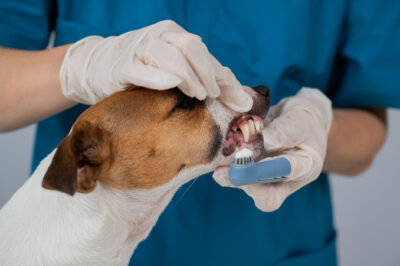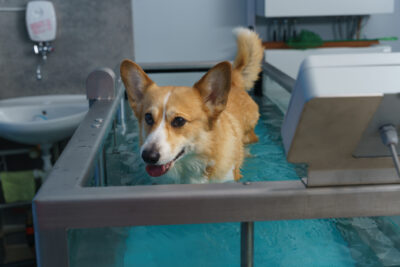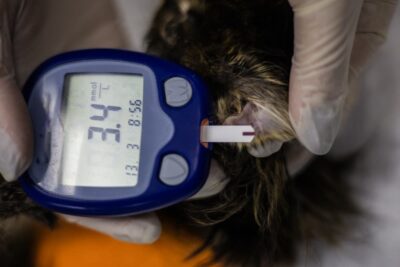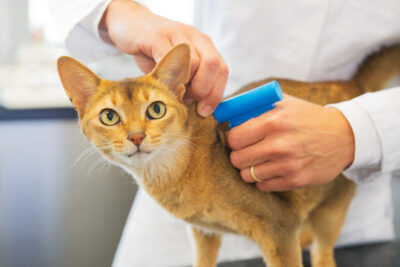10 Questions about COVID-19 and Pets—Answered

COVID-19 is a respiratory illness that was initially discovered in late 2019. SARS-CoV-2 is the name of the virus that causes COVID-19.
While there are many coronaviruses already circulating in both human and animal populations, this unique human coronavirus is currently having significant worldwide health impacts. COVID-19 has generated a lot of concern and fear.
As a pet owner, you may wonder what this condition means for your pets and how to keep your pets safe. The good news, there is no reason to give up your pet, board your pet, or rehome your pet during this outbreak. That said, we want to take this opportunity to answer some of the most common questions that pet parents have about the coronavirus and pets.
Can Dogs Get Coronavirus?
Experts do not think dogs are likely to contract COVID-19 from their owners. Research is still ongoing, however, and we are still learning about the novel coronavirus and dogs.
On March 13, 2020, IDEXX Laboratories, a veterinary diagnostic laboratory, reported that they had developed a diagnostic test for SARS-CoV-2 in pets. In the process of developing this test, they tested thousands of client-owned dogs and cats for the virus and found no positive results (1). These preliminary results are encouraging in suggesting that infection is not common in pets.
In some parts of the world, dogs belonging to owners with COVID-19 did test positive for the virus. The dogs were removed from their homes and quarantined. Neither showed any sign of illness (2).
The significance of these results was initially unclear, but at least one of the dogs developed antibodies against SARS-CoV-2 (3). This suggests that a true infection occurred.
Dogs can become infected with the common canine coronavirus, which is a different virus in the coronavirus family, and has been around for a long time.. This virus infects only dogs—it does not affect humans or other pets. Canine coronavirus infection usually doesn’t cause symptoms in adult dogs, but puppies can develop diarrhea from this virus.
Can Cats Get Coronavirus?
Similarly to dogs, experts think cats are unlikely to contract COVID-19 from their owners.
There have been a few cases of SARS-CoV-2 infection in domestic cats. One happened in Belgium in a cat belonging to an individual with COVID-19 (4). This cat did show signs of illness, including respiratory signs, vomiting, and diarrhea. The virus was found in the cat’s feces, suggesting that cats can become infected. At this time, however, we don’t know whether the cat’s illness was actually caused by the virus.
Two cats in New York State also tested positive for the virus, marking the first pet-related cases in the U.S. (5). The cats live in separate parts of the state and may have contracted the virus from their owners or outside influences—at least one of the cats spends time outdoors. Though the felines showed mild signs of respiratory illness, both cats are expected to make a full recovery.
Further research is needed to understand how SARS-CoV-2 might impact cats, but it’s important to note that only one cat has tested positive for the virus.
Cats, like dogs, have their own species-specific coronavirus. This virus, which affects the intestines, is known as feline coronavirus. Most feline coronavirus infections do not produce any symptoms, although some cats develop diarrhea. A small percentage of cats infected with feline coronavirus can develop a serious inflammatory condition known as feline infectious peritonitis.
Can Dogs and Cats Spread COVID-19?

At this time, there is no evidence to suggest that dogs and cats can spread COVID-19 to humans or to each other. Based on the few cases of pets testing positive for the virus, it does seem possible that pets may become infected by their human owners. However, this occurrence appears to be extremely rare. There is no evidence to suggest that transmission can occur in the other direction.
Can the COVID-19 Virus Live on a Pet’s Fur?
Scientists are currently studying COVID-19 to determine how long it can remain infective on various surfaces. Theoretically, it is possible that the virus could live for a short time on a pet’s fur. In general, however, this risk is thought to be low.
Non-porous surfaces (such as plastic and stainless steel) are typically able to harbor the virus for longer periods of time than porous surfaces. Pet fur is a porous surface; therefore, it is not expected to pose a significant transmission risk (6).
Should Pets Be Tested for the Coronavirus?
There is currently no evidence to support the routine testing of pets for COVID-19. If your dog or cat develops signs of respiratory disease, your veterinarian will instead test for more common respiratory health problems. There are a number of viral and bacterial infections that can cause upper respiratory disease in pets.
Research in this area is ongoing. If our understanding of this disease changes as we learn more COVID-19 facts and human-to-pet spread is found to be a risk, testing will be made commercially available and may become more widespread.
Can I Still Walk My Dog During Quarantine or Stay-at-Home Orders?

In most areas with a stay-at-home order, walking dogs is permitted. The details of where you can walk your dog, however, may be restricted. Some locations permit access to hiking trails and other outdoor recreation areas during a stay-at-home order, while other locations may have laws that restrict you to only walking the roads near your home.
When walking your dog during a stay-at-home order, be sure to follow proper social distancing practices.
These practices include:
- Keep at least 6 feet (2 meters) between you and any other person you encounter.
- Limit contact with high-touch surfaces, such as doorknobs, elevator buttons, gate latches, etc.
- Wash or sanitize your hands thoroughly after touching any potentially-contaminated surface.
What Items Should I Have for Pets at Home?
In case supply chains are disrupted or it’s unsafe to leave your home, you should maintain at least a one-month supply of pet food and pet medications. If you have cats, ensure that you have an adequate supply of litter.
If you are at home instead of going to work, your pets will probably enjoy the extra attention and interaction! Keep plenty of pet toys at home, so that you can play with your pets. Additionally, look for interactive toys that your pets can play with alone. This will help entertain them while you are working or taking care of other responsibilities.
This is also a good time to ensure that your pet’s ID tags and microchips are up to date. If you become separated from your pet, tags and/or a microchip will maximize the chances that your pet is safely returned to you.
I’m Feeling Sick. How Do I Care for My Pet?

When you’re sick, it’s best to limit contact with your pets if possible or practice good hygiene methods. Given current questions surrounding possible transmission to dogs and cats, it’s best to play it safe.
If possible, have another family member be your pet’s primary caregiver until you begin feeling better. This person can be the primary individual in charge of meals, walks, play, and snuggles until you begin feeling better.
If you live alone and need to care for your pet while ill, do your best to limit direct contact. Wash your hands before and after caring for your pet. Limit close personal contact, such as snuggles and allowing dog kisses on your face. While this may be a temporary annoyance, it is the best way to ensure that you and your pet both stay safe.
Again, there is no current evidence that pets can transmit COVID-19 to people. There is no reason to give up your pet, board your pet, or rehome your pet during this outbreak. Limiting contact and using good hygiene are the best measures to limit your pet’s risk of infection.
Are There Any Financial Resources for Pet Parents?
During this time, you may have interruptions to your own income that make it challenging to pay for veterinary care. If you feel this is likely, it’s best to begin researching options and have a backup plan.
Many veterinary clinics accept third-party financing, such as CareCredit or ScratchPay. You can apply for credit through these companies online and receive a rapid approval with a set credit limit.
There are also online fundraising options that can help you with medical expenses. While you have likely heard of GoFundMe, there are also pet-specific crowdfunding options, such as Waggle.
Finally, some local and national organizations (such as The Pet Fund and RedRover Relief), have funds available to help with pets in need. In general, these organizations will require an application (involving information about your pet and your financial circumstances) in order to receive approval for funds
How Can I Help Pets During This Time?

Many animal lovers are concerned that more pets may be surrendered to shelters as a result of COVID-19. Fortunately, being at home more often during this period provides all of us with an opportunity to help!
Working from home will likely make it easier for you to foster a dog or cat, freeing up space in local shelters. A foster pet can be a pleasant companion for you during this period of social distancing, while also saving the pet’s life in the process.
Contact your local shelter or rescue group to ask about the foster process. You can also fill out a foster application on How I Met My Dog, which pairs dogs in need with foster families.
Even if you can’t open your home to another pet at this time, consider making a donation to a local animal shelter. Most shelters will gladly accept financial donations or donations of supplies. If you’re planning to donate supplies, it’s always best to call the shelter first so that you can find out which specific items they need. This small gesture could make a big difference for homeless pets.
Related Articles:
The Coronavirus and Pets: What You Need to Know
Best Pet Toys for At-Home Play
9 Simple Ways to Bond With Your Dog at Home
COVID-19: Pet Rescues and Shelters Stay Positive and Innovate
How to Foster a Pet: Everything You Need to Get Started
12 Self-Care Tips We Can Learn From Our Pets
How the Pet Industry is Helping During the COVID-19 Pandemic









